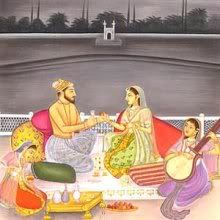
Jaddan Bai had three children from three different men. The story of the union of Jaddan and Mohanbabu is very interesting. Uttamchand Mohanchand belonged to an orthodox Mohyal Brahmin family of Rawalpindi. He was to go to England to study medicine but heard the voice of Jaddan Bai and fell in love with her. His family refused to accept Jaddan Bai as their daughter-in-law but that did not deter him from marrying her and dedicating his entire life to her. Nargis was named Fatima A Rashid by her father but she later adopted the name Nargis for Hindi movies. Jaddan Bai's two sons from different men, Akthar Hussain and Anwar Hussain became film directors and actors.

Jaddan Bai - Lagat Karejawa Mein Chot :
Jaddan Bai - Roop Joban :
Jaddan Bai - Tere Sang Raja :
Jaddan Bai cast Nargis in Talashe Haq (1935), becoming the first woman composer of Indian cinema. In 1936, Jaddan Bai established Sangeet Films, producing films featuring her daughter, Nargis, as a child artiste. However, failing family fortunes forced Jaddan Bai to cast her daughter in leading roles from the tender age of fourteen and Nargis became the sole bread-earner for the family. Jaddan Bai died on 8th April, 1949.
Disclaimer : The information on Jaddan Bai was collected from various credible and not-so-credible sources on the internet. The author of this blog does not in anyway mean to hurt the sentiments of anyone alive or disregard the souls of the dead.
.. more 78rpm vintage Songs »







